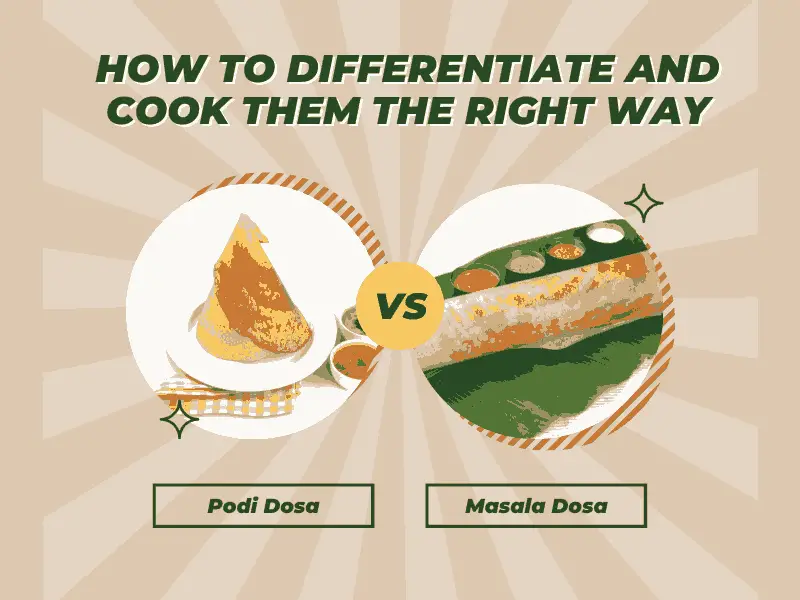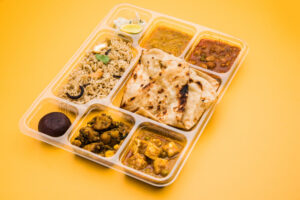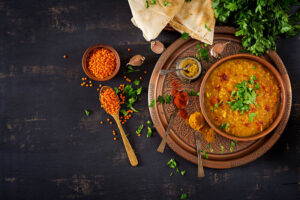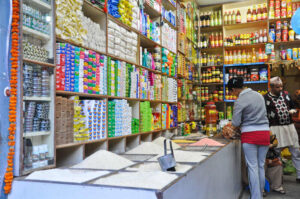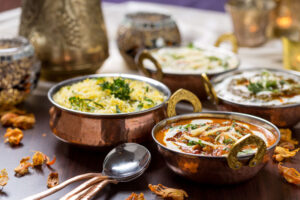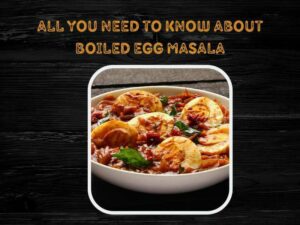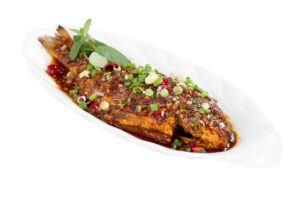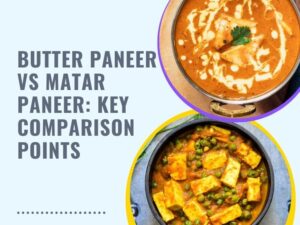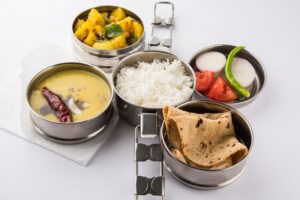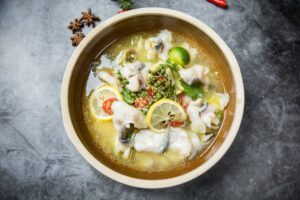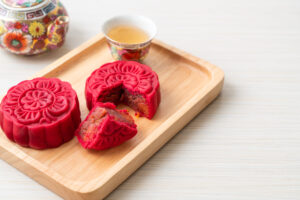Among the several varieties of dosa that are delectably served with a side of coconut chutney and sambar are podi dosa and the globally loved masala dosa. Whether you like crisp dosas or soft dosas, there’s no denying that these are filling meals by themselves. Read on to know more about podi dosa vs masala dosa.
Podi Dosa vs Masala Dosa
Which type of dosa do you usually prefer? One with stuffing in it or without? The podi dosa and masala dosa are two different types of dosas with varying preparation methods and considerably differing tastes.
While one has a powder (podi) sprinkled over it, the other has potato masala stuffing.
What is Podi Dosa?
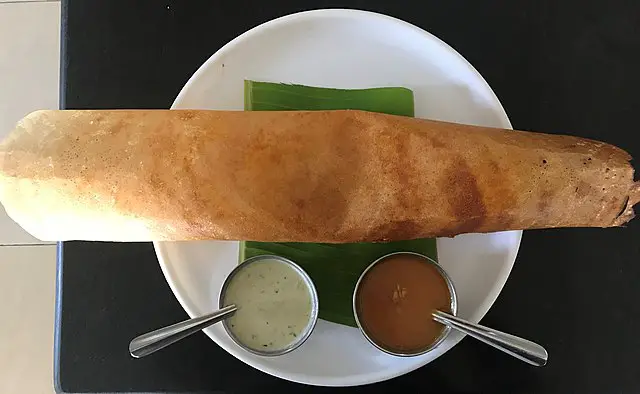
Podi dosa is a delicacy from South India. Spices are ground to make podi, which is a powder usually used to prepare a chutney served with idlis.
In this case, the podi is added to the dosa batter. The dish is then even more delicious and it goes well with coconut and green chutney (or even sambar).
What is Masala Dosa?
Another popular South Indian dosa, the masala dosa, is made with rice, lentils, and potato masala stuffing made with fenugreek seeds, ghee, coriander leaves, and curry leaves.
Perhaps you might be interested in reading about Rava masala dosa vs masala dosa and kara dosa vs masala dosa.
History
The podi / idli podi / milaga podi used to make the dosa originates in Southern India. This gunpowder is also a side dish for idli, dosa, or uttapam.
On the other hand, masala dosa originated in the South-Indian state of Karnataka. It is believed that a Brahmin in the city of Udupi, in an attempt to make beer at home from fermented rice, instead made a batter and made crepes out of it. What was named ‘Dosha’ (sin) became ‘Dosa’.
Popularity
Undoubtedly, masala dosa is not just popular across India but has gained global popularity. So much so that there are even several varieties, including the Mysore masala dosa, Rava masala dosa, etc.
While the podi dosa is comparatively easier to prepare, it probably isn’t as popular as masala dosa globally. However, it is an equally loved dish in India.
Do read into paper masala dosa vs masala dosa to know the differences and similarities between these two popular dosas.
Nutrition
A plain dosa with dosa podi amounts to about 140 calories.
Masala dosa – Nutrition facts provided by Dr. Deepak Krishnamurthy, Senior Interventional Cardiologist, Sakra world hospital, Bangalore, tells you all there is to know about this filling meal. Typically, a single serving of masala dosa provides 181 calories, with a significant chunk of it being carbs.
I was in fact waiting for someone to say this today, so that I can take this Sunday class on nutrional value of South Indian vegetarian breakfast! There you go @hemmadi masala dosa, vada, upma and coconut chutney. https://t.co/26aq9RcYDM pic.twitter.com/7r51sewqnZ
— Dr Deepak Krishnamurthy (@DrDeepakKrishn1) July 10, 2022
Health Benefits
Using the podi for your dosas provides a protein-rich meal. A podi dosa has healthy fats, is suitable for heart health, boosts the immune system, reduces inflammation, and kickstarts metabolism.
Masala dosa is one common breakfast item for many people around the world. It provides you with healthy carbohydrates and ample proteins and is easy on the digestive system. It’s also low on the fat count and is a good option for those keeping a check on their fat count.
About the Recipes
Podi dosa vs masala dosa are two completely different types of dosas in terms of ingredients and preparation methods.
Ingredients
| Podi Dosa | Masala Dosa | |
| For the dosa batter | Idli / Dosa rice, Fenugreek seeds, Black lentil (Urad dal), Flattened rice | Black lentil (Urad dal), Bengal gram (Chana dal), Rice, Flattened rice, Fenugreek seeds |
| For the stuffing | Podi – Black lentil, Bengal gram, sesame seeds, Dried red chili, curry leaves, dry coconut, tamarind, asafoetida, salt | Potato masala – Potatoes, mustard seeds, cumin seeds, Bengal gram, Black lentil, asafoetida, ginger, onions, curry leaves, green chilies, turmeric powder, salt, coriander leaves |
The masala dosa and podi dosa ingredients can be typically found at any Indian grocery store online.
Methods of Preparation
Here’s an easy-to-make recipe that can be prepared in a jiffy.
To make the podi for podi dosa:
- In a pan, roast 2 tablespoons of sesame seeds on a low flame, without oil.
- Keep aside after transferring to a blender.
- Add a teaspoon of oil and 1/4 cup black lentil and 1/4 cup Bengal gram into the same pan.
- Add 6 dry red chilies and some curry leaves. Continue roasting on low heat.
- Add 2 tablespoons of dried coconut powder; roast till it turns golden.
- Transfer to the blender once all the roasted ingredients have cooled.
- Add 1/4 teaspoon turmeric, a pinch of asafoetida, a small ball-sized tamarind and some salt.
- Without adding water, grind to a coarse powder.
Podi dosa recipe:
- Heat a pan or griddle on medium heat.
- Pour a ladleful of dosa batter and spread in circles from the middle to the outer edge of the pan.
- Sprinkle the podi on the inner side and cook till done.
- Serve hot with sambar and chutney.
If you’d like to prepare a crispy, mouth-watering masala dosa, here’s a masala dosa recipe:
Texture
A good podi dosa requires a soft dosa for the coarse to fine podi to stick to it, and not fall off if folded.
On the other hand, masala dosa tastes best when the dosa is crispy on the outside and soft on the inside, with the semi-dry potato masala filling.
Serving Suggestions
Both podi dosa and masala dosa are served hot with coconut chutney and sambar.
Preservation Techniques
The podi can be stored for 2 – 3 months in an airtight container to preserve flavor and aroma. This can be used to prepare podi dosa when needed.
Dosa batter can be refrigerated in an airtight container and lasts for about 4 days. It can be frozen for up to a month.
The potato masala filling can last a couple of days in the refrigerator.
While you could freeze podi or masala dosa, the best way to consume them is hot and fresh off the pan/griddle.
What is Podi Masala Dosa?
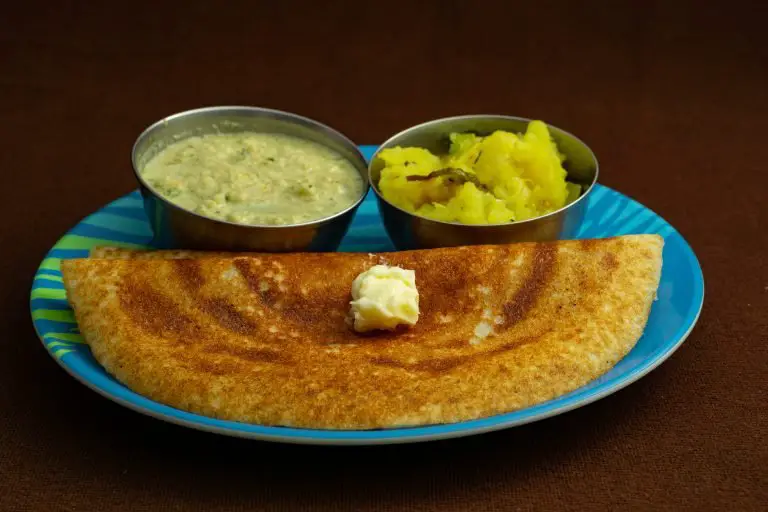
A simple variation of the podi dosa, the podi masala dosa involves a generous sprinkling of gunpowder, topped with potato masala and chutney. It’s usually served like an open dosa and is garnished with butter, grated carrots, freshly grated coconut, and coriander leaves for an enhanced taste.
Perhaps you’d also be interested in reading about Mysore dosa vs masala dosa.
How do You Eat Podi?
The podi or gun powder chutney can be served with idlis or dosas, along with sambar. You could also sprinkle it on plain basmati rice and drizzle with fortified butter, which is a popular way of eating it.
Conclusion
Here’s a summary of podi dosa vs masala dosa of what you’ve read so far about these two interesting dishes:
- Podi dosa is made by sprinkling the podi over the dosa, being cooked on the pan.
- Masala dosa is another popular South Indian dosa made by placing a potato masala stuffing on the dosa, which is then folded in half and served.
- Both podi dosa and masala dosa have their origins in Southern India.
- Among the two varieties, masala dosa is more popular globally, while both are equally popular in India.
- A podi dosa has 140 calories, and a masala dosa has about 181 calories.
- The nutritional benefits of podi dosa and masala dosa include being a protein-rich meal, healthy carbohydrates, and low-fat content.
- While the same batter could be used for the dosa, one needs the gunpowder while the other needs a potato masala, requiring different ingredients.
- The dosa batter must be spread on a pan or griddle, and the prepared podi or potato masala must be used for the different dosa types.
- Podi dosa is better with soft dosa, while masala dosa is better with crispy dosa.
- Both dosas are served with sambar and coconut chutney.
- While you could freeze the prepared dosas, serving them hot is recommended. Alternatively, you could store the batter in the fridge or freezer. The podi lasts 2 – 3 months for podi dosa, and potato masala lasts a couple of days in the refrigerator.
- Podi masala dosa is the podi dosa with potato masala stuffing and chutney over it.
- Podi can be had with idlis, dosas, or sprinkled over cooked basmati rice.
